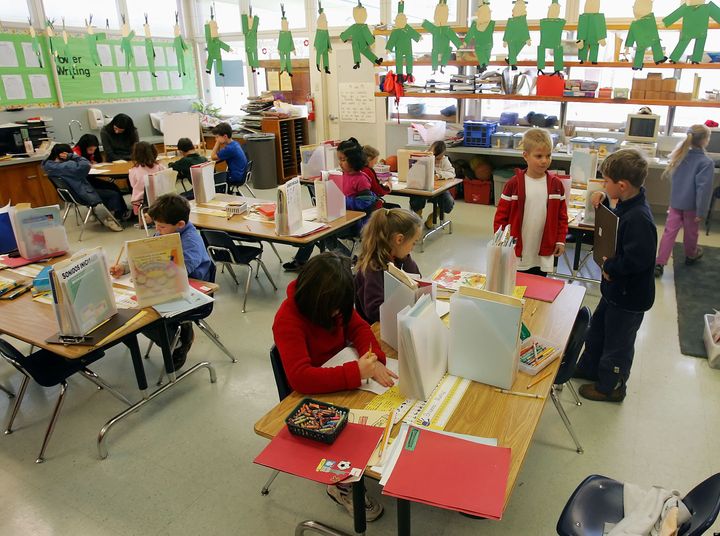
This story comes courtesy of California Watch.
By Louis Freedberg
Underscoring the deepening impact of the state's budget crisis, nearly 60 percent of California school districts have reduced the length of the school year, and 30 percent have shrunk it to 175 days, the minimum permitted under state law.
By comparison, last year only 5 percent of districts had reduced their school year to 175 days, according to a report issued yesterday by the Legislative Analyst's Office.
The report found that the average class size in kindergarten through third grade has risen to 25 students, compared to 20 just two years ago. Average class sizes in higher grades have grown from about 28 students to 31.
The report recommends that Gov. Jerry Brown and the Legislature move immediately to reform the state's $50 billion school finance system, currently based on what it calls "antiquated funding formulas that over time have become increasingly disconnected from local needs."
The findings confirm earlier surveys conducted by California Watch that found that 16 of the state's 30 largest districts had shrunk the length of their school year, and 20 out of 20 had increased K-3 class sizes to 25 or more. Twelve had increased their class sizes to 29 or 30.
In recent years, the state has made it easier for districts to increase class sizes and still receive a portion of the money allocated for class-size reduction. The Legislative Analyst's Office is recommending removing all limits on how the state spends its class-size reduction money, which would almost certainly lead to even larger class sizes and the demise of one of the most ambitious -- and expensive -- education reform programs in state history.
The Legislative Analyst Office's findings are based on responses it received to a survey it sent to California's nearly 1,000 school districts. The analysts received responses from 382 districts, with enrollments totaling 58 percent of California's 6.3 million K-12 school children. Because fewer than half responded, it is unknown how representative the sample is.
The report suggests that schools are only going to find themselves in deeper trouble as they brace for the abrupt end to $7.1 billion in federal stimulus funds they have received over the past two years.
One way districts have survived is by taking advantage of new flexibility granted by the state Legislature last year when it lifted requirements on how districts could use $4.5 billion in financing for 40 "categorical programs," from counseling services for seventh- to 12th-graders to bilingual teacher programs. Districts have been pleading for even more flexibility for the remaining 20 categorical programs, costing $6.7 billion.
The Legislative Analyst's Office recommends that the Legislature remove all strings attached to these programs, along with several others.
However, the report also notes that districts have responded to the greater flexibility they now have by diverting some funds away from programs such as art and music, adult education, and those serving gifted and talented students. To make sure districts don't altogether abandon programs that are a priority to the state, "the state would need to decide what types of broad services school districts should provide."
The analyst's office takes issue with Gov. Brown's proposal to grant districts flexibility in how they spend categorical funds for another two years. That timeline, the analyst's office contends, will only "postpone important decisions that the state ultimately must confront."
The report concludes: "We recommend that the state act now to improve its K-12 system."